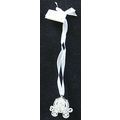Ship - Mary Rose being raised after 437 years 1982
- Condition : Used
- Dispatch : 2 Days
- Brand : None
- ID# : 33655563
- Quantity : 1 item
- Views : 938
- Location : United Kingdom

- Seller : justthebook (+1704)
- Barcode : None
- Start : Fri 05 Nov 2010 01:25:58 (BST)
- Close : Run Until Sold
- Remain : Run Until Sold
More Listings from This Seller view all
Seller's Description
- Postcard
- Picture / Image: Monday 11 Oct 1982 - Mary Rose returns to the surface after 437 years. Was shown live on TV
- Publisher: Mary Rose Trading Co.
- Postally used: no
- Stamp: n/a
- Postmark(s): n/a
- Sent to: n/a
- Notes & Key words:
------------------------------------------------
Postage & Packing:
UK (incl. IOM, CI & BFPO): 99p
Europe: £1.60
Rest of world (inc. USA etc): £2.75
No additional charges for more than one postcard. You can buy as many postcards from me as you like and you will just pay the fee above once. (If buying postcards with other things such as books, please contact or wait for invoice before paying).
Payment Methods:
UK - PayPal, Cheque (from UK bank) or postal order
Outside UK: PayPal or Google Checkout ONLY please. NO non-UK currency checks or money orders (sorry).
NOTE: All postcards are sent in brand new stiffened envelopes which I have bought for the task. These are specially made to protect postcards and you may be able to re-use them. In addition there are other costs to sending so the above charge is not just for the stamp!
----------------------------------------------
Text from the free encyclopedia WIKIPEDIA may appear below to give a little background information:
*************
Salvage
Raising the Mary Rose meant overcoming a number of delicate problems that had never been encountered before. The salvage of the Swedish warship Vasa 1959–61 was the only comparable precedent, but it had been a relatively straightforward operation since the hull was completely intact and rested upright on the seabed. It had been raised with basically the same methods as were in use in Tudor England: cables were slung under the hull and attached to two pontoons on either side of the ship which was then gradually raised and towed into shallower waters. Only one third of the Mary Rose was intact and she lay deeply embedded in mud. If the hull was raised in the traditional way, there was no guarantee that it would have enough structural strength to hold together out of water. Many suggestions for salvage were discarded, including the construction of a cofferdam around the wreck site, filling the ship with small buoyant objects (like ping pong balls) or even to pump brine into the seabed and freeze it so it would float and take the hull with it. After lengthy discussions it was decided in February 1980 that the hull would first be emptied of all its contents and strengthened with steel braces and frames. It would then be lifted to the surface with floating sheerlegs attached to nylon strops passing under the hull and transferred to a cradle. It was also decided that the ship would be recovered before the end of the diving season in 1982. If the wreck stayed uncovered any longer it risked irreversible damage from biological decay and tidal scouring.[104]
During the last year of the operation, the massive scope of full excavation and salvage was beginning to take its toll on those closely involved in the project. In May 1981 Alexander McKee voiced concerns about the method chosen for the salvage and openly questioned Margaret Rule's position as excavation leader. McKee felt ignored in what he viewed as a project where he had always played a central role, both as the initiator of the search for the Mary Rose and other ships in the Solent, and as an active member throughout the diving operations. He had several supporters who all pointed to the risk of the project's turning into an embarrassing failure if the ship was damaged during salvage. To address these concerns it was suggested that the hull should be placed on top of a supporting steel cradle underwater. This would avoid the inherent risks of damaging the wooden structure if it was lifted out of the water without appropriate support. The idea of using nylon strops was also discarded in favour of drilling holes through the hull at 170 points and passing iron bolts through them to allow the attachment of wires connected to a lifting frame.[105]
In the spring of 1982, after three intense seasons of archaeological underwater work, preparations began for the salvage. The operation soon ran into problems: early on there were difficulties with the custom-made lifting equipment; divers on the project belonging to the Royal Engineers had to be pulled because of the outbreak of the Falklands War; and the method of lifting the hull had to be considerably altered as late as June. After the frame was properly attached to the hull it was slowly jacked up on four legs straddling the wreck site to pull the ship off the seabed. The massive crane of the barge Tog Mor was then used to lift the frame and hull on to the specially designed cradle which was padded with water-filled bags. On the morning of 11 October 1982, the final lift of the entire package of cradle, hull and lifting frame began. At 9:03 the first timbers of the Mary Rose broke the surface in the presence of the salvaging team, Prince Charles and curious spectators on boats circling the site. A second set of bags under the hull were inflated with air to cushion the waterlogged wood and finally the whole package was transferred to the barge that would take the hull ashore. Though eventually successful, the salvage operation was close to floundering at two occasions; first when one of the supporting legs of the lifting frame was bent and had to be removed and later when a corner of the frame, with "an unforgettable crunch",[106] slipped more than a metre (3 feet) and came close to crushing part of the hull.[107]
Listing Information
| Listing Type | Gallery Listing |
| Listing ID# | 33655563 |
| Start Time | Fri 05 Nov 2010 01:25:58 (BST) |
| Close Time | Run Until Sold |
| Starting Bid | Fixed Price (no bidding) |
| Item Condition | Used |
| Bids | 0 |
| Views | 938 |
| Dispatch Time | 2 Days |
| Quantity | 1 |
| Location | United Kingdom |
| Auto Extend | No |
| Subject | Sailboat |



 for 1 item(s)
for 1 item(s)

















